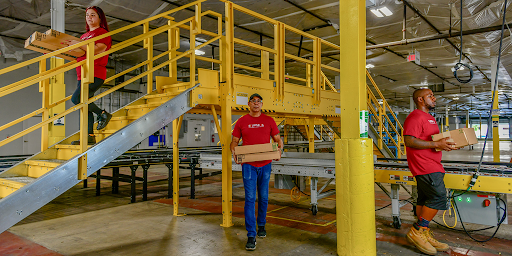
Productivity pay. Cost Per Unit (CPU). Whatever you call it, it’s an antidote to the traditional hourly compensation model. An antidote because it cures, or at least mitigates, the ailments of the hourly model, which include:
- Inability to accurately predict labor expenses.
- Paying for time spent vs. results achieved.
- Low employee satisfaction, engagement, and loyalty.
An engaged workforce is better for everyone. That’s what productivity pay delivers, especially when coupled with a pool pay system focused on team versus individual performance.
It can be difficult, if not impossible, to accurately predict the time—hours—required to unload a truck. You don’t know how many cases you’ll be able to get unloaded in a day; you can’t predict if a shipment will be delayed requiring OT; you can’t calculate the individual productivity level of each of your workers.
That uncertainty can be removed entirely through a cost per unit or productivity pay model.
CPU or Productivity Pay: What It Is and Its Benefits
CPU or productivity pay, exactly as the term sounds, is paying workers for what they produce instead of the time they put in. For instance, instead of being paid hourly to unload a truck at the loading dock, workers are paid by the item or by the box.
It doesn’t matter how long they work. What matters is how much they unload.
Productivity Pay for More Productive Staff
A productivity pay model results in higher satisfaction and retention of workers who can make more money while, potentially, working fewer hours. For example, if they unload trucks that need to be unloaded by 3:00 p.m., they do not need to stay on hand until their official shift ends at 5:00 p.m. This way, they don’t earn less, and your bottom line remains unaffected.
Productivity pay represents benefits to employees because they have the opportunity to earn more and they have the control over how much they earn. It benefits employers—you!—because you can predict, with precision, what your labor costs will be.
Warehouses point to labor recruitment, efficiency and productivity among the top challenges they face. Productivity pay helps you minimize or eliminate those challenges. Your costs remain static while warehouse workers’ earning potential—and satisfaction—increase. We’ve seen workers earn up to 35% higher wages while warehouses maintain static costs.
Team-Based Pay Takes Productivity Pay to the Next Level
Eclipse takes productivity pay to the next level with a team-based or pool pay system that rewards the team for its performance vs. rewarding individuals. The team is incentivized to work together efficiently and effectively to unload as much product as possible, which raises everyone’s pay.
We’ve found that this approach has meaningful and measurable benefits for our customers, who have improved labor efficiencies while driving down costs and boosting retention. And they’re able to forecast with far more accuracy to protect their bottom lines. No longer at risk of rising pay through overtime required when delays or backlogs occur, operations managers also see a boost in employee satisfaction and engagement.
Typical Hourly Pay Scenario
Consider a typical scenario in an hourly pay setting. Workers know they’ll be paid for an eight hour day, regardless of their output. They can work eight hours and unload 120 cases an hour—or 80 cases an hour. It doesn’t really matter to them. They get paid the same regardless.
Improved CPU Pay Model
Now consider a team-based pay environment. Workers know that if they can unload 130, 140, 150, or more cases an hour, their individual pay will increase proportionately. A $14/hour worker can see their pay rise to $19, $20, or even more. If they unload all of the trucks at the dock two hours before “quitting time” it doesn’t negatively impact how much they make. In fact, they could make more—and have more time to spend with friends, family, or pursuing personal pleasures.
We’re All in This Together
There are additional benefits to productivity pay as well. More seasoned workers are encouraged to work with and coach newer, or less experienced workers. These less experienced workers also see personal benefit in following the advice and counsel of team leads—the more they can do together, the more they will all be paid.
Again, you benefit as well. The more efficiencies you gain, the fewer backups you’ll experience at the dock.
Keeping staff engaged and productive while accurately forecasting expenses is critical in our tight labor market and economy. Productivity pay could be the solution to your staffing and productivity needs.
Are you looking for a win-win-win for you, your company, and your workers? Look at productivity pay. Learn more in our guide, A Quick Guide to Productivity Pay, today!
